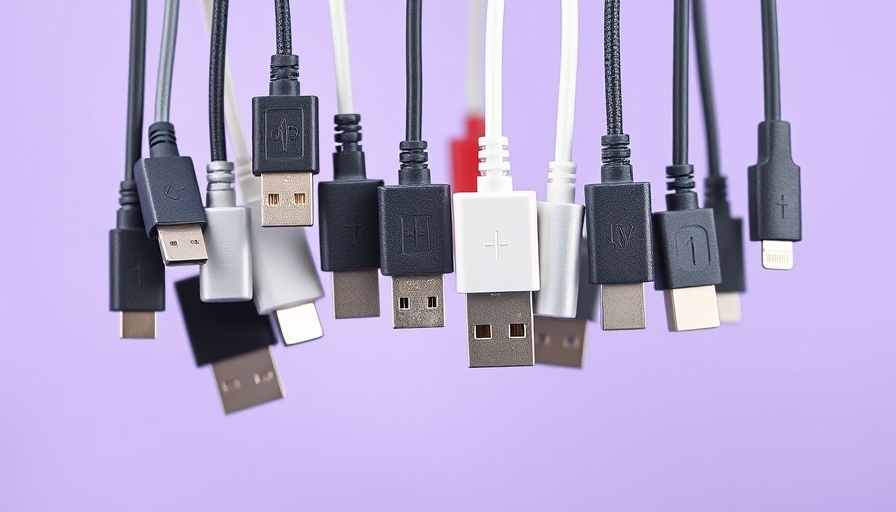
Understanding the World of USB Cables: A Homeowner's Guide
USB cables are often overlooked until you're knee-deep in a jumble of cords, searching for a working connection. For homeowners, knowing the differences between USB types can save both time and frustration. Let's break down the most common USB cable types, their features, and how to choose the right one for your needs.
The USB-A: The Classic Connector
USB-A may be the most recognizable type of USB cable. Characterized by its rectangle shape, it commonly found on older devices like laptops, TVs, and power adapters. While it might work fine for basic tasks, it lacks modern conveniences such as reversibility; you’ll likely experience the classic struggle of flipping it multiple times before it connects. USB-A supports varying speeds, from a max of 480 Mbps with USB 2.0 to up higher with USB 3.0, making it a decent option for lower-speed applications.
Micro-USB: The Once-Ubiquitous Standard
Micro-USB became the go-to standard for many smartphones, Bluetooth speakers, and other gadgets. Its distinctive trapezoid shape makes it compact, but it’s not the most durable choice. Over time, the tiny internal pins can wear out, limiting its lifespan. Most Micro-USB cables only support USB 2.0 speeds, which pales in comparison to newer technologies. As a result, many modern gadgets have made the switch to USB-C, leaving Micro-USB in the dust.
USB-C: Today’s Favorite
USB-C is rapidly becoming the preferred choice among tech enthusiasts and homeowners alike. Its oval shape is both stylish and functional; notably, it is reversible, so you never have to struggle with orientation again. More than just a charging cable, USB-C can handle data transfer, video output, and audio—all through one cord. With speeds reaching up to 40 Gbps with compatible devices, this cable is perfect for everything from smartphones to laptops. However, it's crucial to check specifications, as not all USB-C cables are equal; some are designed just for charging, while others can transfer high-speed data.
The Legacy of Mini-USB
Mini-USB was once a staple for devices like digital cameras and GPS units. Although it's larger than Micro-USB, it now has limited use in contemporary devices. If you still own gadgets that utilize Mini-USB, it’s wise to keep the cable in good condition, as they are becoming increasingly rare.
Lightning Cables: Apple’s Proprietary Choice
Apple's Lightning cables are designed for its devices such as iPhones and older iPads. They are slim, reversible, and serve both charging and data transfer functions. However, they do not support the same high-speed capabilities as USB-C, nor can they handle high-wattage charging required for larger laptops. With Apple transitioning newer models to USB-C, the Lightning connector may soon become obsolete.
Choosing the Right USB Cable for You
Understanding the differences between these cables can help you make informed decisions when purchasing new devices or accessories. When considering your options:
- Assess your current device compatibility.
- Look for cables that fulfill your needs, whether it's speed, data transfer, or charging capabilities.
- Keep in mind durability—some cables are designed to withstand more usage than others.
- Ultimately, streamline your collection by recycling outdated cables to declutter your space.
By learning about the USB cables available, you're not just organizing your tech drawer—you’re investing in a more efficient, hassle-free digital life. Embrace the simplicity that comes with understanding the gadgets around you!
Ready to upgrade your tech setup? Start by cleaning out your drawer of outdated cables and invest in the future: the USB-C cable. It's time to make your tech life simpler!
 Add Row
Add Row  Add
Add 




Write A Comment